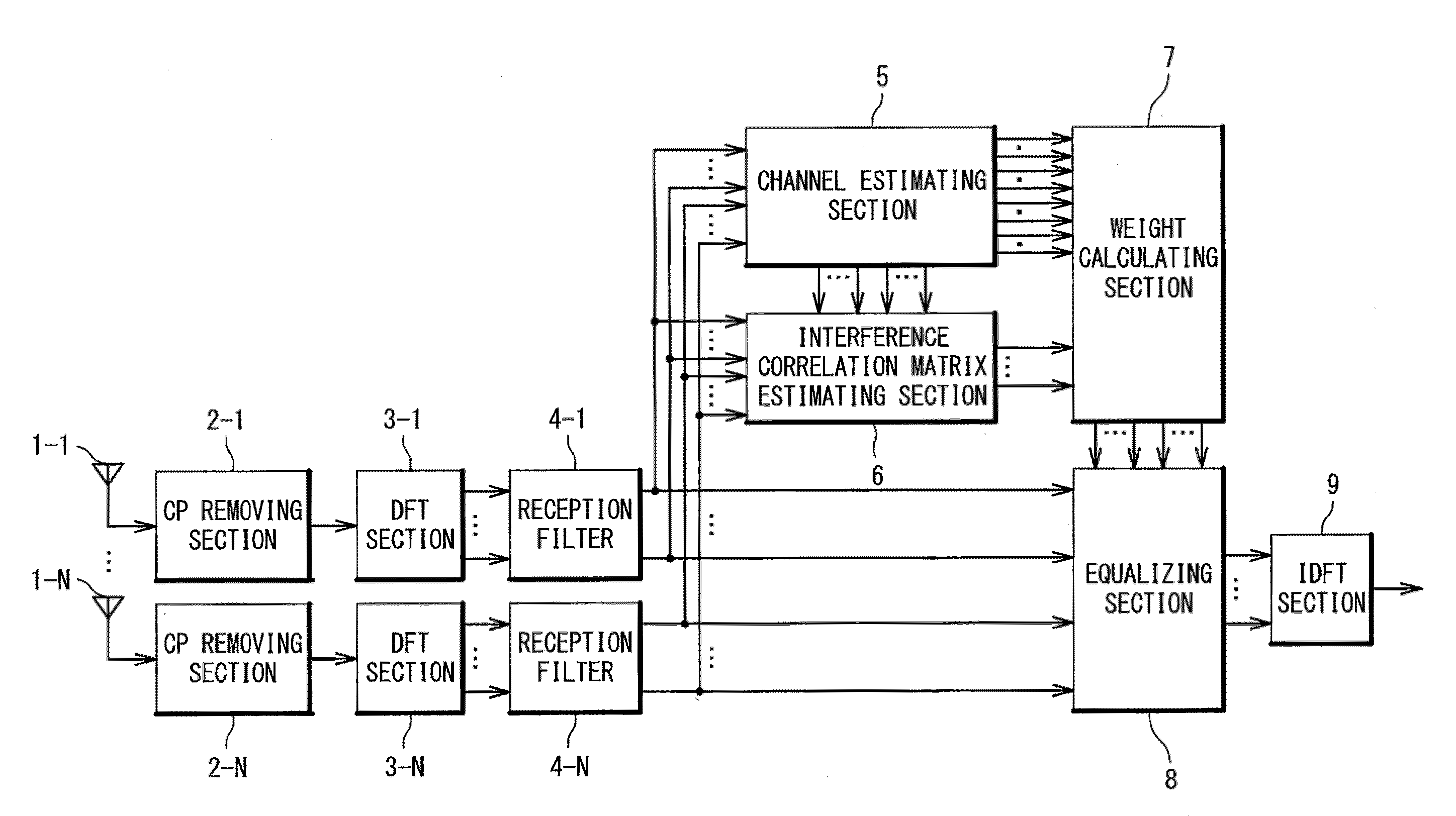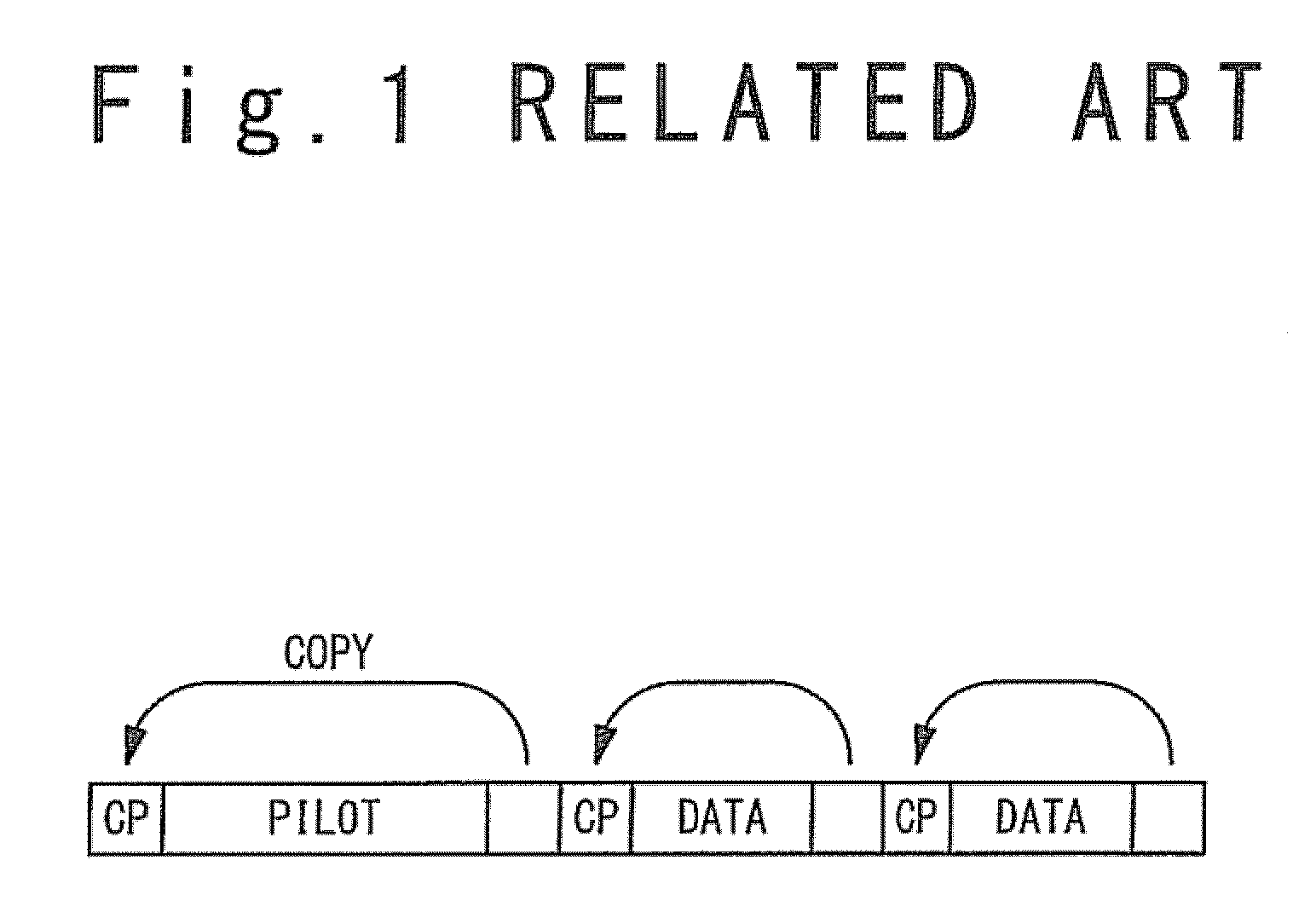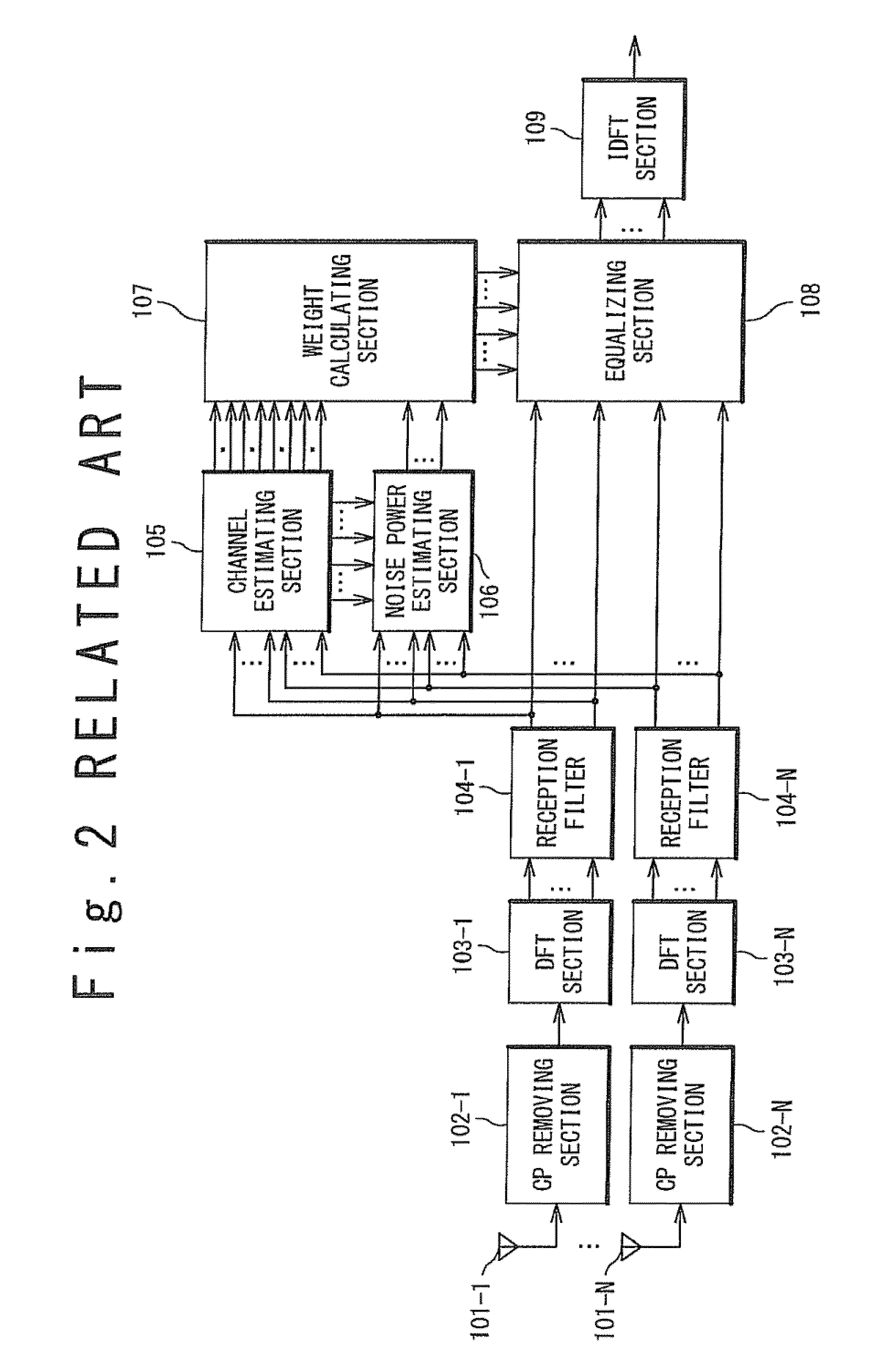Receiving apparatus and mobile communication system
a technology of receiving apparatus and mobile communication system, which is applied in the direction of baseband system details, amplitude demodulation, line-faulst/interference reduction, etc., can solve the problems of inter-symbol interference (multipath interference), interference (other cell interference, other cell interference, etc.) and the effect of suppressing the interference of another cell
- Summary
- Abstract
- Description
- Claims
- Application Information
AI Technical Summary
Benefits of technology
Problems solved by technology
Method used
Image
Examples
first exemplary embodiment
[0036]The receiving apparatus and the mobile communication system according to a first exemplary embodiment of the present invention will be described below with reference the drawings. FIG. 5 is a block diagram showing a configuration of the receiving apparatus according to the first exemplary embodiment of the present invention. The first exemplary embodiment relates to a receiving apparatus of a one-transmission antenna multiple-receiving antenna (SIMO: Single Input Multiple Output) communication. In the receiving apparatus of the present invention, an SC signal is received by N (N is the integer of 2 or more) receiving antennas and then multipath equalization and other cell interference suppression are carried out through a signal process in a frequency domain. The receiving apparatus of the present invention contains receiving antennas 1-1 to 1-N, CP removing sections 2-1 to 2-N, DFT sections 3-1 to 3-N, reception filters 4-1 to 4-3S, a channel estimating section 5, an interfer...
second exemplary embodiment
[0050]A second exemplary embodiment of the present invention will be described below. The second exemplary embodiment relates to the receiving apparatus of a multiple-transmission antenna multiple-reception antenna (MIMO: Multiple Input Multiple Output) communication.
[0051]FIG. 9 is a diagram showing the schema of the MIMO transmission / reception system. In the MIMO transmission / reception system, when the number of the transmission antennas is defined as M (M is an integer of 2 or more) and the number of the reception antennas is defined as N (N is an integer of 2 or more), the transmission side contains a transmitting unit 201 and transmission antennas 202-1 to 202-M, and the reception side contains reception antennas 203-1 to 203-N and a receiving unit 204. The plurality of transmission antennas 202-1 to 202-M transmit data signals that are different although the same frequency is used. The plurality of reception antennas 203-1 to 203-W are used to receive the data signals. Thus, w...
PUM
 Login to View More
Login to View More Abstract
Description
Claims
Application Information
 Login to View More
Login to View More - R&D
- Intellectual Property
- Life Sciences
- Materials
- Tech Scout
- Unparalleled Data Quality
- Higher Quality Content
- 60% Fewer Hallucinations
Browse by: Latest US Patents, China's latest patents, Technical Efficacy Thesaurus, Application Domain, Technology Topic, Popular Technical Reports.
© 2025 PatSnap. All rights reserved.Legal|Privacy policy|Modern Slavery Act Transparency Statement|Sitemap|About US| Contact US: help@patsnap.com



